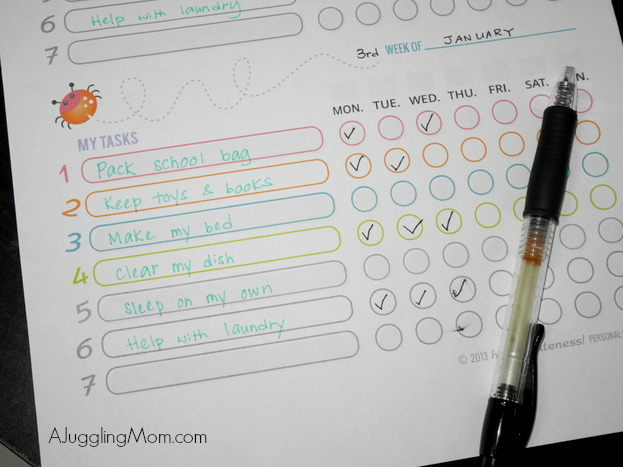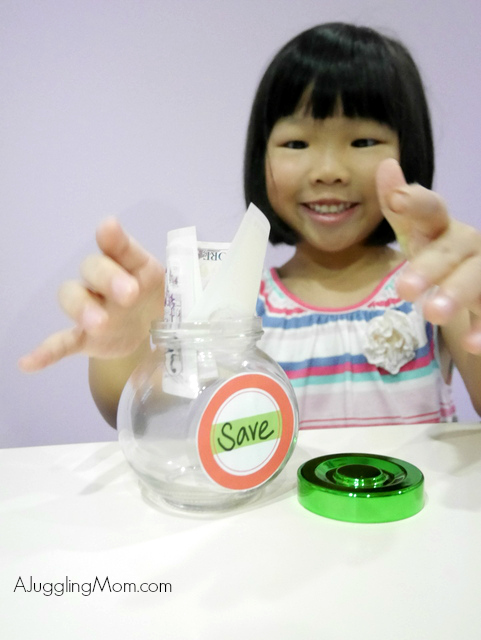When the school term started, my Facebook feed was filled with parents’ stories of their newly minted primary ones. You had the usual kids struggling to keep awake as they were not used to waking early at 6am, as well as some who struggled to keep their shoes on as they usually removed their shoes upon reaching the childcare.
Another mum shared a funny story of how she went to her son’s rescue when she noticed that he busted his pocket money on a packet of juice and didn’t have enough to pay for his meal during recess. There were also unhappy parents whose children discovered the bookshop and came back with fancy stationery that they didn’t need. While I may laugh at these stories, I’m making a mental preparation of what I need to equip Sophie when she enters Primary One next year and one of them is teaching her to manage her pocket money by budgeting and saving.
At five years old, Sophie is familiar with the concept of money, why we need it, what it’s used for and how we earn it. But kids from as young as three years old can be taught simple concepts of money as that’s when they get more observant of the world around them.
Based on a POSB National Savings survey, 89% of respondents felt that the value of savings have eroded amongst children these days. 83% felt that it’s the responsibility of parents to teach the value of thrift.
So here are 5 simple ways that you as a parent can teach your child about money – how to save and spend wisely especially with Chinese New Year around the corner.

Teaching children how to save and spend wisely
- Money comes from doing a job
Have you ever tried asking your child where money comes from? I did and the answer I got was from the office. She went on to explain that when daddy and mummy work, we have money and we can buy things and of course go on family holidays. I really like her sense of priority, this one.

In the same way, I’ve been trying to teach Sophie to earn her keep by helping around the house with the chores. So far, she’s been pretty enthusiastic about it as she knows that when she collects 10 checks, she gets $1.
While paying the kids to do the housework might be debatable in some households, I feel it’s getting the message across that money doesn’t come easily and you need to put in effort and work for it.
- Wants versus Needs
This may take a little education since the young minds can’t understand why wanting to have the latest brick figures or doll that’s advertised on TV is not a need but a want.
And here’s when as parents, we need to lead by example. We need to model what good spending and saving behaviour looks like. If we are frivolous with our money and make unnecessary purchases, chances are our kids will not think twice about spending their money. But if we teach them to make good decisions about money, they will form healthy habits of making sound money choices.
- Saving, spending and giving
The conversation about saving was brought up one day when I went to the ATM to withdraw my money. Sophie was curious why the bank had my money, so I explained that I save my money in the bank to earn more money and that’s when her eyes lit up and exclaimed, “I want to save my money in the bank too”.

She was glad that she already has a bank account but I went on to introduce this save, spend and give concept which I’ve seen on the internet. The idea is simply that for the allowance given, the child needs to allocate some to saving, some to giving (her tithes which is 10% of her allowance) and the remainder can be used for spending.

A tip is to use clear jars so that they can watch their money grow. To execute this, you may need to save up on your ten and twenty cent coins.
- Don’t spend what you don’t have
As a child, I grew up being taught this golden rule – not spending what you don’t have. And if you ever have to beg, steal or borrow to buy something, don’t.
This again goes back to point number 2 of wants and needs. Most of the time our hearts desire for things which are not genuinely a need at all. Therefore, to build a good financial foundation, teach your child about priorities and if it’s something truly special, save up for it so that they will appreciate it.
- Teaching an attitude of gratitude
I’ll be honest and confess that I used to be the kind of parent who would buy toys for Sophie to make myself feel less guilty as a working mum who wasn’t spending enough time with her. And as a result, Sophie grew up having so too toys around her that she didn’t appreciate them and I knew that I was doing her a big disfavour.
I’ve since stopped this buying spree and even taught her to share her toys by donating them to homes and charity organisations. I often tell her that she’s very blessed to have not only her parents but also grandparents and relatives who would buy toys for her whereas in some homes, they don’t even have enough to buy necessities like food. She’s learnt to be more appreciative of what she has by taking good care of her toys and even tells me that she don’t need toys last Christmas.
I do hope that these 5 simple pointers open up conversations with your child about the value of saving. To help bring home the message especially for school-going children, you’ll be happy to know that POSB is bringing back the POSB National School Savings Campaign with their friendly mascot, Smiley Squirrel!
POSB National School Savings Campaign
The POSB National School Savings Campaign is an initiative by POSB, supported by the MOE where primary school students are encouraged to save by completing a stamp card.
Upon completion, the student can then deposit the stamp card into any POSB/DBS Quick Cheque Deposit location and POSB will credit the full value of the stamp card ($10) and a $1 bonus (the bonus is limited to one stamp card per child, per month and only valid for POSBkids account holders).
The POSB National School Savings stamp card will be available at any POSB/DBS branch, SingPost and at Pacific or Popular bookstores in schools from 2 February 2015 onwards.
If you think that this is a great idea do pledge your support for this initiative or find out more information about the campaign here.
Get started on your child’s saving account by signing up for an ePOSBkids account here.
Make saving a lifelong habit
Just like all good habits, developing good money habits will take time. Allow your child space to make mistakes and guide them along the way. And remember, the earlier you start teaching them to spend and save wisely, the sooner they’ll be more financially responsible.
What else would you teach your child about spending and saving money wisely? I’ll love to hear from you too 🙂
* This is an advertorial post written for POSB. A Juggling Mom received compensation for this post, however all opinions expressed here are my own.
Tagged: POSB, saving, teaching values





















Leave a Reply